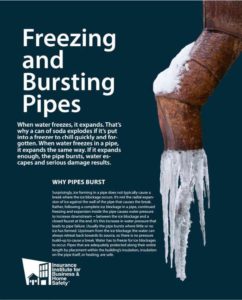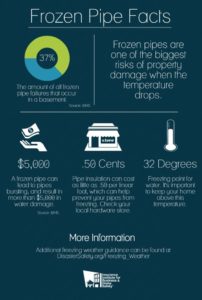Blog
What is the difference between Replacement Cost and Actual Cash Value?
When you first purchase homeowner’s insurance and/or any other type of property insurance, you may have to make a choice between replacement cost option or actual cash value option. When it comes to understanding your homeowner’s/property insurance coverage it can be confusing. The reason it’s confusing is a customer really doesn’t understand the difference between replacement cost and actual cash value.
Most people think their coverage limits on their Declaration Page of their insurance policy is a good indicator as to how much they will be paid at the time of a claim. This isn’t the reality. The coverage limits on the declaration page is the maximum you could possibly be paid, not necessarily how much money you will receive.
What you should know so you understand how much you will get paid during a claim, and the difference between replacement cost and actual cash value coverage.
What is Replacement Cost?
Replacement cost is what it sounds like. It’s the cost of replacing something you own with a brand-new-version for e.g., your TV gets destroyed due to a fire, it’s the cost of buying a comparable model at the store or your couch burns to a crisp due to a house fire, it’s the cost of buying a comparable couch at the furniture store. It is easy to estimate replacement cost. You can look up the same brand and model online and see what it’s selling for at your favorite store.
Figuring out the replacement cost of your home and other buildings can be a little trickier. In calculating the replacement cost it’s the cost of the materials and labor required in order to rebuild the structure. (The value of the land beneath the building has nothing to do with replacement cost). Some polices that include replacement cost will provide money for you and your family to stay in a hotel while your home is being rebuilt.
Don’t confuse home replacement cost with what you paid for your home when you purchase it – replacement cost is what it will cost us to rebuild your home, based upon the cost of the materials, labor and design cost. Real Estate value can vary based upon your neighborhood’s desirability, how hot or stagnant the housing market and a bunch of other big picture factors.
A home’s replacement cost is the cost of rebuilding, pure and simple.
What is Actual Cash Value?
Actual cash value means exactly what it sounds like. It’s the depreciated value of an item of property at the time of the loss, opposed to what it would cost to replace that item with a brand-new-version.
Over time, the value of almost everything declines. Your TV slowly goes on the fritz. That couch slowly burns up. You pay way less for thrift store stuff than brand-new stuff for a reason.
The loss of value over time (called depreciation) can be estimated using math. Using a few different methods, economists and insurance adjusters figure out an item’s actual cash value based on its replacement value, its age and its “salvage value,” or the amount an item could theoretically be sold for at the end of its useful life.
The older something is, the less it’s worth – most of the time.
Certain rare items experience appreciation, or gained value, over time. This is especially true for art, precious metals and gems, firearms, fine jewelry and some antiques.
These items will need special treatment in your insurance policy to make sure their covered for their full value,
How Much Will You Be Paid for Your Claim?
To determine how much you will be paid on your insurance claim depends on three key factors.
- How accurately can you describe, document and show the lost value of your property? Have a home inventory of items (electronics, tools etc., write down serial and model numbers), keep copies of your receipts. The more documentation and proof you provide, the less likely you are to be at the mercy of the insurance company’s estimates.
- There are different types of property insurance policies, e.g., homeowner’s, condo, renters, commercial building, etc.… What type of insurance policy do you have? Depending on the type of policy you have will dictate the risks covered. The policy will cite exclusions and special limits for certain items. Special limits are not standard across all insurance companies. Companies that specialize in high-value homes might have higher special limits in the areas of jewelry, fine arts or even collectibles.
- The basis of claims settlement depends on your policy, how much you can expect from an insurance claim. Will the insurance company pay “actual cash value” or “replacement cost?” People who insure for actual cash value will never receive enough money in a claim to replace the items they lost. You can find the basis of claims settlement in your policy in small print. Homeowners are often disappointed in how they are paid when they don’t understand the meaning of insurance claim terms.
Blog
Did you know that cooling and heating are the leading causes of home fires and fire injuries? Did you know that November and December are the peak months for fire-related deaths? With the holidays right around the corner and the weather getting colder, now is the perfect time to review and practice fire safety.
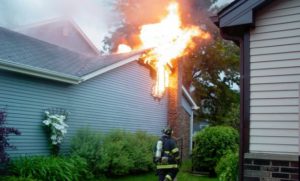
Safety Tips When Cooking:
- Be alert; if you are sleepy or have consumed alcohol, don’t use the oven or stove-top.
- Stay in the kitchen while you are frying, grilling, boiling or broiling food.
- When simmering, baking or roasting, check the food regularly, remain in the kitchen while cooking and use a timer.
- Keep anything that can catch fire away from your stove-top.
Heating is the second leading cause of death. Heating safety tips:
- Keep all flammables, like paper, clothing, bedding, drapes or rugs, at least 3 feet from a space heater, stove or fireplace.
- Never leave portable heaters and fireplaces unattended; turn off heaters and make sure fireplace embers are extinguished before leaving the room.
- If you must use a space heater, place it on a level, nonflammable surface, like ceramic tile, not on a rug or carpet.
- Keep children and pets away from space heaters.
- When buying a space heater, look for models that shut off automatically if the heater falls over.
Other top causes of fire include smoking, electrical problems and candles. To minimize risks:
- Institute a “no smoking” policy in the house.
- Check all cords and replace any that are frayed or have bare wires.
- Switch to flame-less candles.
- Keep matches and lighters high and out of children’s reach in a locked cabinet.
Working Smoke Alarms are a Must
About three out of five deaths happen in homes with no smoke alarms or working smoke alarms. Smoke alarms are a key part of a home fire escape plan providing early warning reducing your risk of dying in a fire.
- Install smoke alarms on every level of your home, inside bedrooms and outside sleeping areas on the ceiling or high on the wall.
- Keep smoke alarms away from the kitchen, at least 10 feet from the stove, to reduce false alarms.
- Use special alarms with strobe lights and bed shakers for people who are hard of hearing or deaf.
- Test smoke alarms monthly.
Create and Practice a Fire Escape Plan
In the event of a fire, remember every second counts, so you and your family must always be prepared. Escape plans help you get out of your home quickly. Twice a year you should practice a home fire escape plan with your family.
Tips to consider when preparing this plan include:
- Find two ways to get out of each room in the event the primary way is blocked by fire or smoke.
- A secondary route might be a window onto a neighboring roof or a collapsible ladder for escape from upper story windows.
- Make sure that windows are not stuck, screens can be taken out quickly, and that security bars can be properly opened.
- Practice feeling your way out of the house in the dark or with your eyes closed.
- Teach children not to hide from firefighters.
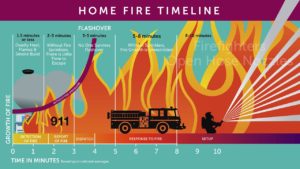
Blog
There is nothing like your home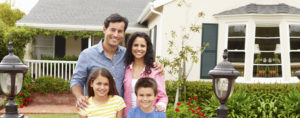
Home, it’s your favorite place to relax after a long day; it’s your sanctuary. It’s where your kids run to after they step off the school bus. It’s a place where you build long lasting memories that have taken place. Your home is where you play, plan and dream with those you love. Therefore, it’s essential you ensure it properly – both inside and out.
Home insurance covers more than disasters
Home insurance isn’t reserved for times of catastrophes such as – fire, tornadoes, and other natural disasters. It can be a welcome sight when your home has been subjected to complete ruin. The hail damage you received to your roof, the broken water heater that flooded your newly finished basement, theft, vandalism, identity theft and more are all items that can be covered under your homeowner’s insurance.
Damage caused by most disaster is covered but there are exceptions. A standard homeowner’s policy does not cover flooding, earthquakes or poor maintenance. Flood Insurance is provided by the federal government’s National Flood Insurance Program, you may purchase this from an insurance agent. Earthquake Insurance is available either in the form of an endorsement or as a separate policy. Most maintenance related problems are the homeowner’s responsibility.
Homeowners insurance policy includes four essential types of coverage
- Coverage for the structure of your home. This part of a policy pays to repair or rebuild your home if damaged or destroyed by fire, hail, lightning or other disaster listed in the policy. It does not cover flood, earthquake or routine wear and tear. Most standard policies also cover structures that are not attached to a house such as a garage, tool shed or gazebo.
- Coverage for personal belongings. Furniture, clothes, and other personal items are covered if stolen or destroyed by fire or other disaster. Most companies provide coverage for 50 to 70 percent of the amount of insurance on the structure of a home. Expensive items like jewelry, furs and silverware are covered, but there are usually dollar limits if they are stolen. To insure these items to their full value, individuals can purchase a special personal property endorsement or floater and insure the item for its appraised value.
- Liability Protection. Covers against lawsuits due to bodily injury or property damage that policyholders or family members cause to other people. It also pays for damage caused by pets. The liability portion of the policy pays for both the cost of defending the policyholder in court and any court awards—up to the limit of the policy. Coverage is not just in the home but extends to anywhere in the world. Liability limits generally start at $100,000. An umbrella or excess liability policy, which provides broader coverage, including claims for libel and slander, as well as higher liability limits, can be added to the policy.
- Additional Living Expense. Pays the additional costs of living away from home if a house is inhabitable due to damage from a fire, storm or other insured disaster. It covers hotel bills, restaurant meals and other living expenses incurred while the home is being rebuilt. Coverage for additional living expenses differs from company to company.
What Home insurance options are available
Lancaster Insurance Center provides the following types of home insurance to meet your specific needs..
- Home Insurance
- Condo / Townhouse Insurance
- Renters Insurance
- Mobile-Home Insurance
- Dwelling Fire / Landlord Insurance
We offer coverage enhancements like replacement cost coverage for your dwelling and contents, guarantee replacement cost, water back up of sewers and drains, ordinance or law, and equipment breakdown.
When it comes to your home, Lancaster Insurance Center is here to help you protect what matters the most. Lancaster Insurance Center will be there for you every step of the way, especially in the event of a claim. We are about helping you protect what matters the most, your family and your home.
Blog
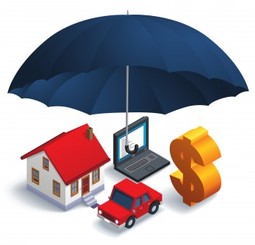 What is Umbrella Insurance?
What is Umbrella Insurance?
Umbrella insurance is an additional liability insurance that will protect you financially in the event you are sued for a large amount of money. It provides additional coverage if you are faced with costs due to a liability claim. Umbrella policies provide coverage in excess of your auto, homeowners, boat, or business and can be applied to all if you have these policies bundled. Umbrella insurance will step in when your primary insurance coverage isn’t enough.
What does umbrella cover?
An umbrella policy provides two types of coverage: liability and defense costs. Umbrella policies will cover an excess of what your primary insurance excludes and/or additional coverage beyond the limits set in your other insurance. It provides coverage for a variety of situations if your held responsible for bodily injury, property damage, or personal injury. An umbrella policy will help pay for these liability-related costs.
What does Umbrella insurance not cover?
Umbrella policies do not cover physical property damage. It does not cover damage to your own home or vehicle; for e.g. someone steals everything in your house, or a hailstorm totals your car; an umbrella policy will not step in as coverage. This would fall under your homeowners or auto insurance coverage.
What does personal umbrella insurance cover?
- Defense cost – If you are sued your umbrella insurance coverage steps in to pay for lawyer fees and processing expenses that will help defend yourself in court. Any remainder umbrella coverage not used for defense cost may help pay for any associated liability expense you owe.
- Teen Drivers – Did you know the crash risk is 3x higher for 16-19-year old, and teens account for about 8-10% of fatal crashes every year. This creates high risk and high liability. Having umbrella insurance coverage boosts your auto liability limit to protect against these increase risks. Teen drivers typically raise your insurance premiums. Having an umbrella policy is a great way to provide additional coverage at a lower cost, rather than adding the extra line of liability on your primary auto insurance.
- Intoxicated party attendee – You host a party or a BBQ cookout at your house. One of your guests drinks too much and is intoxicated. Your guest leaves your party and, on his/her drive home causes an accident. Depending on your state, you may be partially liable for his/her expenses. A lawyer could make the claim you over served him and did not cut him off, you did not stop him from leaving by taking his keys, offering him to stay the night, or offer to call a taxi/cab. People don’t realize one of the most surprising and expensive liability claims they find themselves in is indirect liability. Umbrella insurance coverage can help protect against this when homeowners’ insurance likely won’t.
- Dog bites – Do you own a dog? You walk your dog and another dog spooks him. Both dogs get into a fight, and your dog bites that dog. Your dog also bites the other dogs’ owner while in the mist of pulling the dogs apart. This would cause bodily injury to both the owner and the dog. If your dog bites first or attacks person your will be responsible for medical expense, lost wages and even pain and suffering. This may not be covered by homeowner’s insurance, especially if you have a dog that is on the excluded dog list, such as a Chow, German Shepherd, Pitbull, Rottweiler, Akita and there are a few more. Umbrella insurance coverage could step in to pay for the costs.
- Pain and suffering – You have an accident and are found at-fault for the incident. You could be sued for “pain and suffering.” Pain and suffering is one of the costliest liability expenses. It could lead to hundreds of thousands if not millions of dollars in some cases. Umbrella insurance coverage can help cover these costs; the minimum umbrella limit is $1 million.
Blog
How do you prevent freezing and bursting pipes?
When temperatures drop or even reach subzero degrees you are at risk of your pipes freezing or bursting. Pipes are most at risk in unheated areas such as basement, attic and garage. Once temperature start to drop and reach 20 degrees or below you should take necessary measure inside to keep pipes warm and water running.
Here are some steps in protecting your pipes:
- Keep garage door closed, especially if there are water supply lines in the garage.
- Open Kitchen and bathroom cabinet doors, this will allow warmer air to circulate around the plumbing, especially if your sink in on an exterior wall.
- Turn on cold water and allow it to drip from the faucet, allowing water to run through the pipes or even trickle will help prevent pipes from freezing.
- Keep thermostat set at the same temperature during day and night. During a cold snap is not the time to reduce your thermostat setting so you can save money on your heating bill.
- If you plan to be away during cold weather, leave your heat on in your home, and set no lower than 55 degrees.
- For the long term, add insulation to attics, basements, and crawl spaces. Insulation will maintain higher temperatures in those areas. To prevent drafts, seal cracks and openings around windows, doors, and at sill plates, where the house rest on its foundation.
Do you know how to thaw frozen pipes?
If you turn on your faucet and only a trickle of water comes out, you may have a frozen pipe. If you think you have a frozen pipe, be careful when thawing because if the pipe has already burst, the water will come flowing out and flood your home. If a pipe is broke, turn off the water at the main shutoff valve. If the water is still running and no pipes have burst, you can take the following steps:
- Tun on the faucet. As you heat the frozen pipe and the ice plug begins to melt, you want the water to be able to flow through. Running water through the pipe, even as cold as it is, will help melt the ice in the pipe.
- Apply heat to the section of pipe. Use an electric heating pad wrapped around the pipe, a hair dryer, or a portable space heater, or you can wrap pipes with towels soaked in hot water. DO NOT USE – a blowtorch, kerosene or propane heater, a charcoal stove, or any device with an open flame; the high heat can damage the pipes or even start a fire.
- Apply heat until full water pressure is restored. Make sure you check all your faucets in your home to see whether you have additional frozen pipes. If one pipe freezes, other pipes may too.
- Call a licensed plumber if you are unable to locate the frozen area, if the frozen area is not accessible, or if unable to thaw the pipe.
